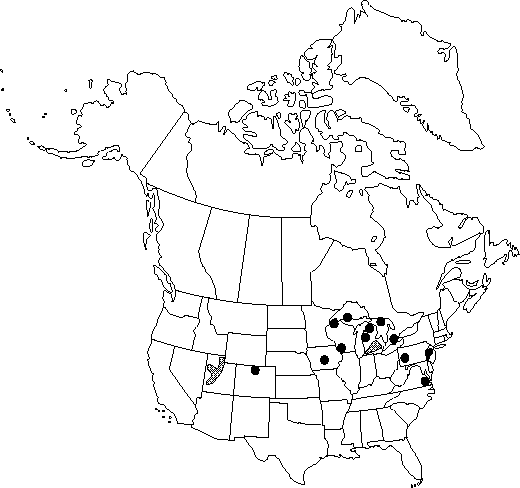Difference between revisions of "Papaver orientale"
Sp. Pl. 1: 508. 1753.
FNA>Volume Importer |
imported>Volume Importer |
||
| (7 intermediate revisions by 2 users not shown) | |||
| Line 8: | Line 8: | ||
}} | }} | ||
|common_names=Oriental poppy | |common_names=Oriental poppy | ||
| + | |special_status={{Treatment/ID/Special_status | ||
| + | |code=I | ||
| + | |label=Introduced | ||
| + | }} | ||
|basionyms= | |basionyms= | ||
|synonyms={{Treatment/ID/Synonym | |synonyms={{Treatment/ID/Synonym | ||
| − | |name= | + | |name=Papaver pseudoörientale |
|authority=(Fedde) Medwedew | |authority=(Fedde) Medwedew | ||
| + | |rank=species | ||
}} | }} | ||
|hierarchy=Papaveraceae;Papaver;Papaver sect. Macrantha;Papaver orientale | |hierarchy=Papaveraceae;Papaver;Papaver sect. Macrantha;Papaver orientale | ||
| Line 20: | Line 25: | ||
}}<!-- | }}<!-- | ||
| − | --><span class="statement" id="st- | + | --><span class="statement" id="st-undefined" data-properties=""><b>Plants </b>to 10 dm, hispid. <b>Stems</b> simple or rarely branching. <b>Leaves</b> to 35 cm. <b>Inflorescences</b>: peduncle moderately to densely appressed pale hispid; bracts sometimes 1-4 just beneath flower. <b>Flowers</b>: petals light orange to orange-red, usually with pale basal spot, sometimes dark-spotted or unspotted, to 6 cm; anthers violet; stigmas (8-)11-15, disc flat or shallowly convex. <b>Capsules</b> sessile, subglobose, obscurely ribbed, to 2.5 cm, glaucous.</span><!-- |
-->{{Treatment/Body | -->{{Treatment/Body | ||
|phenology=Flowering spring–summer. | |phenology=Flowering spring–summer. | ||
|habitat=Fields, clearings, roadsides, and disturbed sites | |habitat=Fields, clearings, roadsides, and disturbed sites | ||
| − | |distribution=Ont.;Colo.;Iowa;Mich.;N.J.;Pa.;Utah;Va.;Wis.;sw Asia | + | |distribution=Ont.;Colo.;Iowa;Mich.;N.J.;Pa.;Utah;Va.;Wis.;sw Asia. |
| − | |discussion=<p>An alpine species in its native range, Papaver orientale is widely grown for ornament and sometimes persists after spreading from cultivation. It should be expected elsewhere in the flora.</p><!-- | + | |introduced=true |
| − | --><p>Papaver bracteatum Lindley, which some authors have included in P. orientale, is similar but more robust, with buds erect, sepals subtended by 3-5 sepaloid and 2 foliaceous bracts, flowers to 20 cm diam., deep red petals with dark basal spot, and capsules to 4 cm. It is widely cultivated and may occasionally escape but apparently does not become naturalized.</p> | + | |discussion=<p>An alpine species in its native range, <i>Papaver orientale</i> is widely grown for ornament and sometimes persists after spreading from cultivation. It should be expected elsewhere in the flora.</p><!-- |
| + | --><p><i>Papaver</i> bracteatum Lindley, which some authors have included in <i>P. orientale</i>, is similar but more robust, with buds erect, sepals subtended by 3-5 sepaloid and 2 foliaceous bracts, flowers to 20 cm diam., deep red petals with dark basal spot, and capsules to 4 cm. It is widely cultivated and may occasionally escape but apparently does not become naturalized.</p> | ||
|tables= | |tables= | ||
|references= | |references= | ||
| Line 36: | Line 42: | ||
-->{{#Taxon: | -->{{#Taxon: | ||
name=Papaver orientale | name=Papaver orientale | ||
| − | |||
|authority=Linnaeus | |authority=Linnaeus | ||
|rank=species | |rank=species | ||
|parent rank=section | |parent rank=section | ||
| − | |synonyms= | + | |synonyms=Papaver pseudoörientale |
|basionyms= | |basionyms= | ||
|family=Papaveraceae | |family=Papaveraceae | ||
|phenology=Flowering spring–summer. | |phenology=Flowering spring–summer. | ||
|habitat=Fields, clearings, roadsides, and disturbed sites | |habitat=Fields, clearings, roadsides, and disturbed sites | ||
| − | |distribution=Ont.;Colo.;Iowa;Mich.;N.J.;Pa.;Utah;Va.;Wis.;sw Asia | + | |distribution=Ont.;Colo.;Iowa;Mich.;N.J.;Pa.;Utah;Va.;Wis.;sw Asia. |
|introduced=true | |introduced=true | ||
|reference=None | |reference=None | ||
|publication title=Sp. Pl. | |publication title=Sp. Pl. | ||
|publication year=1753 | |publication year=1753 | ||
| − | |special status= | + | |special status=Introduced |
| − | |source xml=https:// | + | |source xml=https://bitbucket.org/aafc-mbb/fna-data-curation/src/2e0870ddd59836b60bcf96646a41e87ea5a5943a/coarse_grained_fna_xml/V3/V3_130.xml |
|genus=Papaver | |genus=Papaver | ||
|section=Papaver sect. Macrantha | |section=Papaver sect. Macrantha | ||
|species=Papaver orientale | |species=Papaver orientale | ||
| − | |||
| − | |||
| − | |||
| − | |||
| − | |||
| − | |||
| − | |||
| − | |||
| − | |||
| − | |||
| − | |||
| − | |||
| − | |||
| − | |||
| − | |||
| − | |||
| − | |||
| − | |||
| − | |||
}}<!-- | }}<!-- | ||
-->[[Category:Treatment]][[Category:Papaver sect. Macrantha]] | -->[[Category:Treatment]][[Category:Papaver sect. Macrantha]] | ||
Latest revision as of 22:46, 5 November 2020
Plants to 10 dm, hispid. Stems simple or rarely branching. Leaves to 35 cm. Inflorescences: peduncle moderately to densely appressed pale hispid; bracts sometimes 1-4 just beneath flower. Flowers: petals light orange to orange-red, usually with pale basal spot, sometimes dark-spotted or unspotted, to 6 cm; anthers violet; stigmas (8-)11-15, disc flat or shallowly convex. Capsules sessile, subglobose, obscurely ribbed, to 2.5 cm, glaucous.
Phenology: Flowering spring–summer.
Habitat: Fields, clearings, roadsides, and disturbed sites
Distribution

Introduced; Ont., Colo., Iowa, Mich., N.J., Pa., Utah, Va., Wis., sw Asia.
Discussion
An alpine species in its native range, Papaver orientale is widely grown for ornament and sometimes persists after spreading from cultivation. It should be expected elsewhere in the flora.
Papaver bracteatum Lindley, which some authors have included in P. orientale, is similar but more robust, with buds erect, sepals subtended by 3-5 sepaloid and 2 foliaceous bracts, flowers to 20 cm diam., deep red petals with dark basal spot, and capsules to 4 cm. It is widely cultivated and may occasionally escape but apparently does not become naturalized.
Selected References
None.